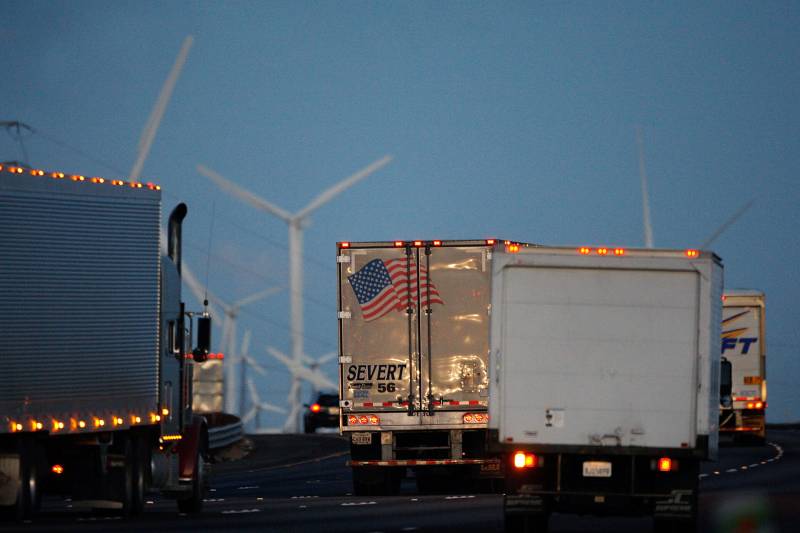The California Air Resources Board will vote on the plan this week, which would phase out diesel truck fleets, from Amazon delivery vans to garbage trucks to big rigs, in an effort to clean up toxic air quality and fight climate change.
“Trucks only represent 6% of vehicles on the road, but represent a disproportionate amount of emissions,” said Sydney Vergis, who worked on the rules for CARB as a division chief. The agency estimates that the regulation, if passed, would save the state $26.5 billion in health costs.
The truck regulation would:
- Require highly polluting drayage trucks, which transport shipping containers from ports and rail yards, to be 100% zero-emission by 2035.
- Mandate that municipalities and state agencies electrify their fleets of trucks and other heavy-duty vehicles, either by having 50% of their new purchases be electric after 2024 and 100% after 2027, or by gradually increasing the percentage of electric vehicles in their fleets until they are completely zero-emission by 2042.
Also:
- Federal and large commercial fleets (defined as comprising more than 50 trucks or generating more than $50 million in annual revenue) can choose to either buy only zero-emission vehicles after 2024 or gradually transition, reaching 100% by 2042.
- The rules would require manufacturers to sell only zero-emission trucks by 2036.
- The requirements would not apply to smaller companies.
California’s more than 1.8 million commercial trucks are responsible for more than a quarter of its greenhouse gas pollution from transportation (PDF), more than 60% of smog-forming nitrogen oxides and more than 55% of fine particulate pollution from vehicles, according to the Union of Concerned Scientists; this pollution, known as PM 2.5, harms both heart and lung health.
The proposal builds on the Advanced Clean Trucks rule, which requires that truck makers gradually increase the percentage of electric trucks they sell in California in the coming years. California passed that regulation in 2021.
Sam Wilson, senior vehicles analyst with the Union of Concerned Scientists, said passage of the proposed rule would be a win — not only for the environment, but for health.
Benefits would be “largely concentrated in disproportionately impacted communities, which is really where we need to be focusing our work,” Wilson said.
But Chris Shimoda, senior vice president of government affairs for the California Trucking Association, has concerns. He’s worried there will be insufficient charging infrastructure for electric trucks, particularly public charging stations.
Shimoda said he’s worked with CARB for more than 10 years on various regulations, but “I have never had a rule proposed by the Air Board that nearly 100% of our membership says cannot be accomplished.”
Bob Ramorino, president of Roadstar Trucking in Hayward, says he’s supportive of the goals of the regulation, but “the timeline is very, very difficult to achieve.” He’s particularly concerned there will not be enough power to meet the demand for charging.
Gonzalez of San Bernardino would like even more and stronger regulation. “My community suffers the ravages of discrimination,” she said. “We see other very beautiful places and cities that don’t have trucks, that don’t have nearby warehouses. But we do, and this is reflected in our health.”
